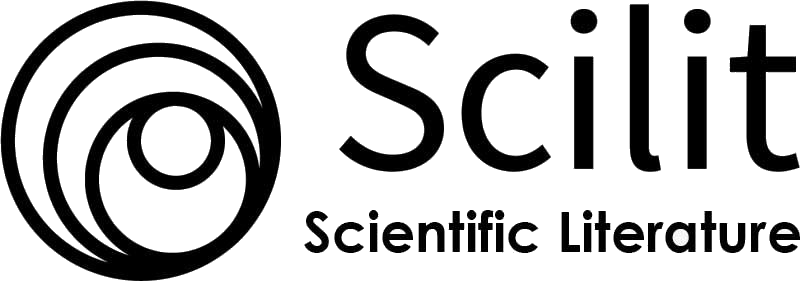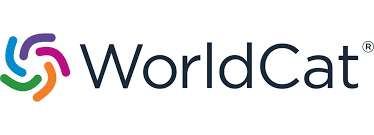Infrastructure as Code (IaC) for Enterprise Applications: A Comparative Study of Terraform and CloudFormation
DOI:
https://doi.org/10.58425/ajt.v4i1.351Keywords:
Infrastructure as Code (IaC), Terraform, AWS CloudFormation, multi-cloud deployment, CI/CD integration, state management, security and compliance, DevOps automationAbstract
Aim: The objective of this study was to evaluate two tools within this category, namely Terraform and AWS CloudFormation and compare their suitability for managing enterprise cloud infrastructure under Infrastructure as Code (IaC) principles.
Methods: Using a comparative evaluation method based on feature analysis, use case modeling, and expert interpretation. The research evaluates these criteria through syntactic usability, state management, modularity, CI/CD integration, security practices, policy enforcement, and deployment performance.
Results: HashiCorp product Terraform is a new entry to the IaC world. It is a provider‑agnostic tool famous for its flexible template structure and support of multi‑cloud environments such as AWS, Azure, and Google Cloud. It provides strong flexibility, very reusable modules, and has a robust open-source ecosystem. Conversely, AWS CloudFormation is tightly integrated with AWS services and supports compliance, orchestration, and automation of AWS-centric environments through JSON/YAML templates, StackSets, and IAM policy integration. The analysis points to Terraform as an option for enterprises moving towards hybrid or multi-cloud strategies, given its high mark in modularity, ecosystem breadth, and cross-platform deployment. However, CloudFormation is superior in aligning compliance, safety in operations, and governance, particularly for AWS exclusive infrastructures.
Conclusion: The study concludes that with the right IaC tool, enterprises can scale their infrastructure appropriately, comply with requirements, and quickly deploy infrastructures in an automated and rapid manner.
Recommendations: If organizations want to have the most portable and flexible configuration across platforms, they should choose Terraform. In contrast, if they desire the simplest integration with AWS services in a regulated environment, they should instead pick CloudFormation.
References
Anderson, R. J. (1994). Liability and computer security: Nine principles. In Computer Security—ESORICS 94: Third European Symposium on Research in Computer Security Brighton, United Kingdom, November 7–9, 1994 Proceedings 3 (pp. 231-245). Springer Berlin Heidelberg.
Atta, A. A. F. E. (2020). Infrastructure migration from datacenter to cloud Solution (Master's thesis, Universitat Politècnica de Catalunya).
Banstola, R. (2015). Implementing Push Notification Systems for Contextual Activity Sampling System.
Ben-Yehuda, M., Day, M. D., Dubitzky, Z., Factor, M., Har'El, N., Gordon, A., ... & Yassour, B. A. (2010). The turtle’s project: Design and implementation of nested virtualization. In 9th USENIX Symposium on Operating Systems Design and Implementation (OSDI 10).
Boda, V. V. R., & Allam, H. (2020). Crossing Over: How Infrastructure as Code Bridges FinTech and Healthcare. International Journal of AI, BigData, Computational and Management Studies, 1(3), 31-40.
Brabra, H. (2020). Supporting management and orchestration of cloud resources in a multi-cloud environment (Doctoral dissertation, Institut Polytechnique de Paris; Université de Sfax (Tunisie). Faculté des Sciences économiques et de gestion).
Callanan, S. (2018). An industry-based study on the efficiency benefits of utilising public cloud infrastructure and infrastructure as code tools in the it environment creation process.
Campbell, B. (2019). Terraform in-depth. In The Definitive Guide to AWS Infrastructure Automation: Craft Infrastructure-as-Code Solutions (pp. 123-203). Berkeley, CA: Apress.
Chavan, A. (2021). Eventual consistency vs. strong consistency: Making the right choice in microservices. International Journal of Software and Applications, 14(3), 45-56. https://ijsra.net/content/eventual-consistency-vs-strong-consistency-making-right-choice-microservices
Chavan, A. (2021). Exploring event-driven architecture in microservices: Patterns, pitfalls, and best practices. International Journal of Software and Research Analysis. https://ijsra.net/content/exploring-event-driven-architecture-microservices-patterns-pitfalls-and-best-practices
Demchenko, Y., Turkmen, F., De Laat, C., Blanchet, C., & Loomis, C. (2016, July). Cloud-based big data infrastructure: Architectural components and automated provisioning. In 2016 International Conference on High Performance Computing & Simulation (HPCS) (pp. 628-636). IEEE.
Guerriero, M., Garriga, M., Tamburri, D. A., & Palomba, F. (2019, September). Adoption, support, and challenges of infrastructure-as-code: Insights from industry. In 2019 IEEE International Conference on Software Maintenance and Evolution (ICSME) (pp. 580-589). IEEE.
Halfawy, M. R., Vanier, D. J., & Froese, T. M. (2006). Standard data models for interoperability of municipal infrastructure asset management systems. Canadian Journal of Civil Engineering, 33(12), 1459-1469.
Kantsev, V. (2017). Implementing DevOps on AWS. Packt Publishing Ltd.
Konneru, N. M. K. (2021). Integrating security into CI/CD pipelines: A DevSecOps approach with SAST, DAST, and SCA tools. International Journal of Science and Research Archive. Retrieved from https://ijsra.net/content/role-notification-scheduling-improving-patient
Kumar, A. (2019). The convergence of predictive analytics in driving business intelligence and enhancing DevOps efficiency. International Journal of Computational Engineering and Management, 6(6), 118-142. Retrieved from https://ijcem.in/wp-content/uploads/the-convergence-of-predictive-analytics-in-driving-business-intelligence-and-enhancing-devops-efficiency.pdf
Mendez Ayerbe, T. (2020). Design and development of a framework to enhance the portability of cloud-based applications through model-driven engineering.
Morris, K. (2016). Infrastructure as code: managing servers in the cloud. " O'Reilly Media, Inc.".
Munk, R. (2021). Grid of Clouds (Doctoral dissertation, School of The Faculty of Science, University of Copenhagen).
Natan, R. B. (2005). Implementing database security and auditing. Elsevier.
Nyati, S. (2018). Revolutionizing LTL carrier operations: A comprehensive analysis of an algorithm-driven pickup and delivery dispatching solution. International Journal of Science and Research (IJSR), 7(2), 1659-1666. Retrieved from https://www.ijsr.net/getabstract.php?paperid=SR24203183637
Pizarro, A., Whalley, C., & Veksler, C. (2014). Architecting for Genomic Data Security and Compliance in AWS. Amazon Web Services.
Polkowski, Z., Khajuria, R., & Rohadia, S. (2017). Big Data Implementation in Small and Medium Enterprises in India and Poland. Scientific Bulletin-Economic Sciences/Buletin Stiintific-Seria Ştiinţe Economice, 16(3).
Raheja, Y., Borgese, G., & Felsen, N. (2018). Effective DevOps with AWS: Implement continuous delivery and integration in the AWS environment. Packt Publishing Ltd.
Raju, R. K. (2017). Dynamic memory inference network for natural language inference. International Journal of Science and Research (IJSR), 6(2). https://www.ijsr.net/archive/v6i2/SR24926091431.pdf
Scarfone, K., Jansen, W., & Tracy, M. (2008). Guide to general server security. NIST Special Publication, 800(123), 66.
Scholl, B., Swanson, T., & Jausovec, P. (2019). Cloud native: using containers, functions, and data to build next-generation applications. O'Reilly Media.
Singh, V., Oza, M., Vaghela, H., & Kanani, P. (2019, March). Auto-encoding progressive generative adversarial networks for 3D multi-object scenes. In 2019 International Conference of Artificial Intelligence and Information Technology (ICAIIT) (pp. 481-485). IEEE. https://arxiv.org/pdf/1903.03477
Soh, J., Copeland, M., Puca, A., Harris, M., Soh, J., Copeland, M., ... & Harris, M. (2020). Infrastructure as Code (IaC). Microsoft Azure: Planning, Deploying, and Managing the Cloud, 201-229.
Stott, B., Alsac, O., & Monticelli, A. J. (1987). Security analysis and optimization. Proceedings of the IEEE, 75(12), 1623-1644.
Sukhadiya, J., Pandya, H., & Singh, V. (2018). Comparison of Image Captioning Methods. INTERNATIONAL JOURNAL OF ENGINEERING DEVELOPMENT AND RESEARCH, 6(4), 43-48. https://rjwave.org/ijedr/papers/IJEDR1804011.pdf
Turnbull, J. (2014). The Docker Book: Containerization is the new virtualization. James Turnbull.
Winkler, S. (2021). Terraform in Action. Simon and Schuster.
Zadok, E., Badulescu, I., & Shender, A. (1999, June). Extending File Systems Using Stackable Templates. In USENIX Annual Technical Conference, General Track (pp. 57-70).
Zeeshan, A. A. (2020). Automating Production Environments for Quality. In DevSecOps for. NET Core: Securing Modern Software Applications (pp. 215-264). Berkeley, CA: Apress.
Downloads
Published
How to Cite
Issue
Section
License
Copyright (c) 2025 Naga Murali Krishna Koneru

This work is licensed under a Creative Commons Attribution 4.0 International License.
The authors retain the copyright and grant this journal right of first publication. This license allows other people to freely share and adapt the work but must give appropriate credit, provide a link to the license, and indicate if changes were made. They may do so in any reasonable manner, but not in any way that suggests the licensor endorses them or their use.










